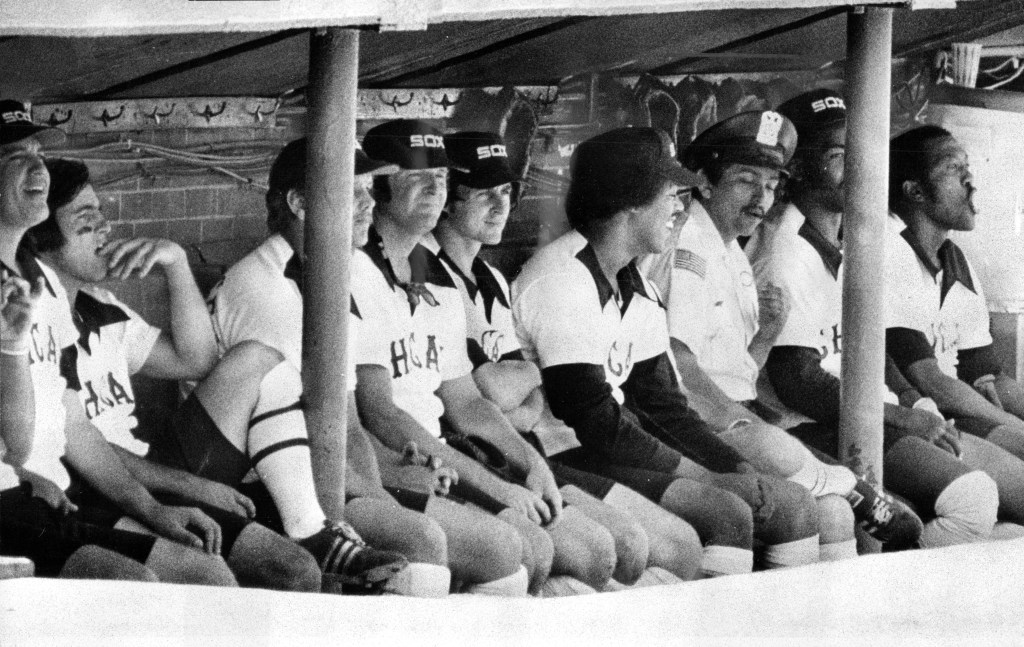Here’s a look back at what happened in the Chicago area on Aug. 8, according to the Tribune’s archives.
Is an important event missing from this date? Email us.
Weather records (from the National Weather Service, Chicago)
- High temperature: 100 degrees (1934)
- Low temperature: 52 degrees (1976)
- Precipitation: 2.35 inches (1977)
- Snowfall: Trace (1912)
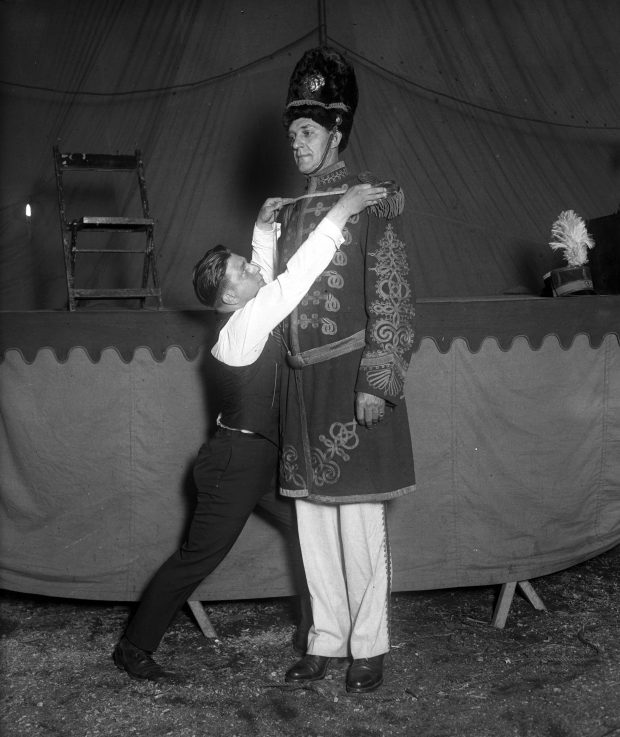 The “giant’ Col. Gulliver and his tailor, Martin Rosen, of the Ringling Bros. Circus in Chicago. Gulliver also went by Capt. Gulliver and was anywhere between 7 feet tall and 8 feet 4 inches tall, according to reports. His real name was Alfred Ingall. (Chicago Herald and Examiner)
The “giant’ Col. Gulliver and his tailor, Martin Rosen, of the Ringling Bros. Circus in Chicago. Gulliver also went by Capt. Gulliver and was anywhere between 7 feet tall and 8 feet 4 inches tall, according to reports. His real name was Alfred Ingall. (Chicago Herald and Examiner)
1931: Several hundred performers — including Goliath the sea elephant — arrived to perform as part of the Ringling Bros. and Barnum & Bailey Circus, which became a fixture of summer in Soldier Field’s parking lot for decades.
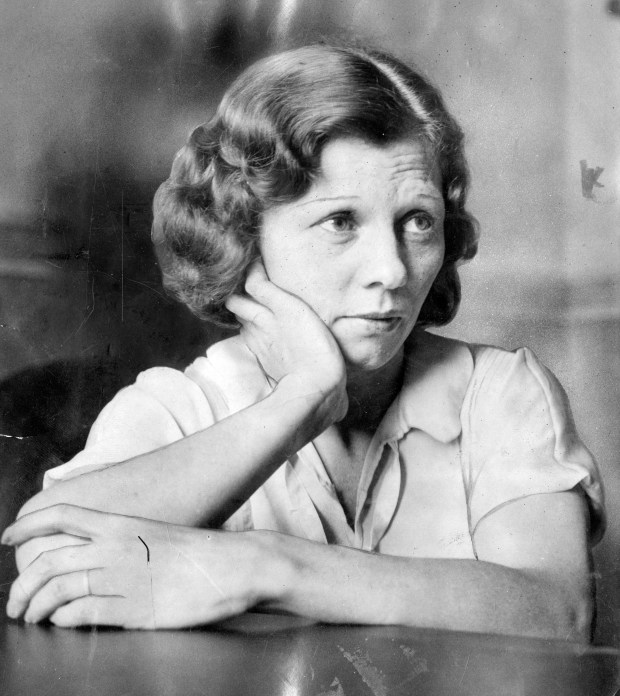 Eleanor Jarman received 199 years for her part in the murder of Gustav Hoeh in 1933. Editor’s note: This historic print has some hand painting on it. (Chicago Tribune historical photo)
Eleanor Jarman received 199 years for her part in the murder of Gustav Hoeh in 1933. Editor’s note: This historic print has some hand painting on it. (Chicago Tribune historical photo)
1940: “Blond Tigress” Eleanor Jarman escaped from the women’s reformatory in Dwight. The mother of two boys had been serving 199 years as an accomplice to a murder her lover committed in Chicago.
Jarman’s family in Sioux City, Iowa, planned to use a bomb shelter to hide her, but she remained on the lam. Only once was she positively seen again — in a then-secret 1975 reunion with a handful of relatives.
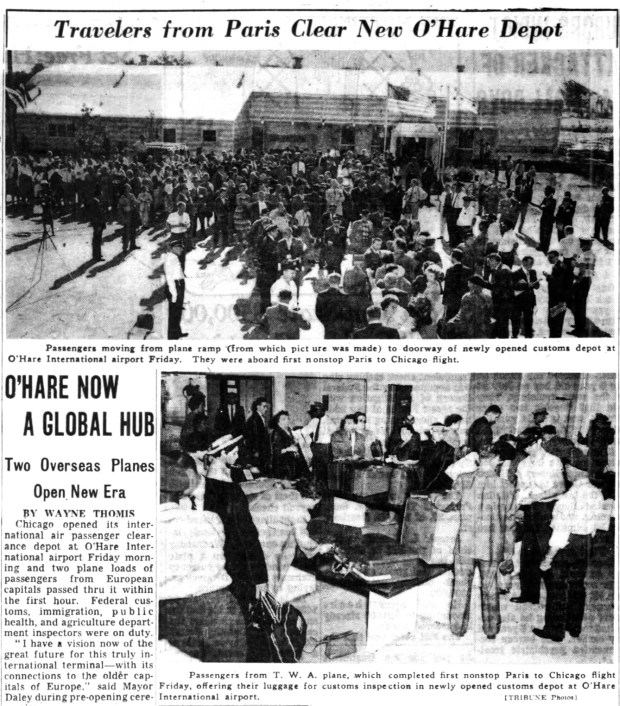 Fifty-eight passengers on a TWA flight from Paris became the first to use a customs inspection depot on Aug. 8, 1958, at Chicago’s O’Hare International Airport. (Chicago Tribune)
Fifty-eight passengers on a TWA flight from Paris became the first to use a customs inspection depot on Aug. 8, 1958, at Chicago’s O’Hare International Airport. (Chicago Tribune)
1958: O’Hare became an international airport. When a TWA flight landed from Paris, its passengers were the first to be processed inside a customs depot that included immigration, public health and agricultural inspectors — services that weren’t previously available at the facility.
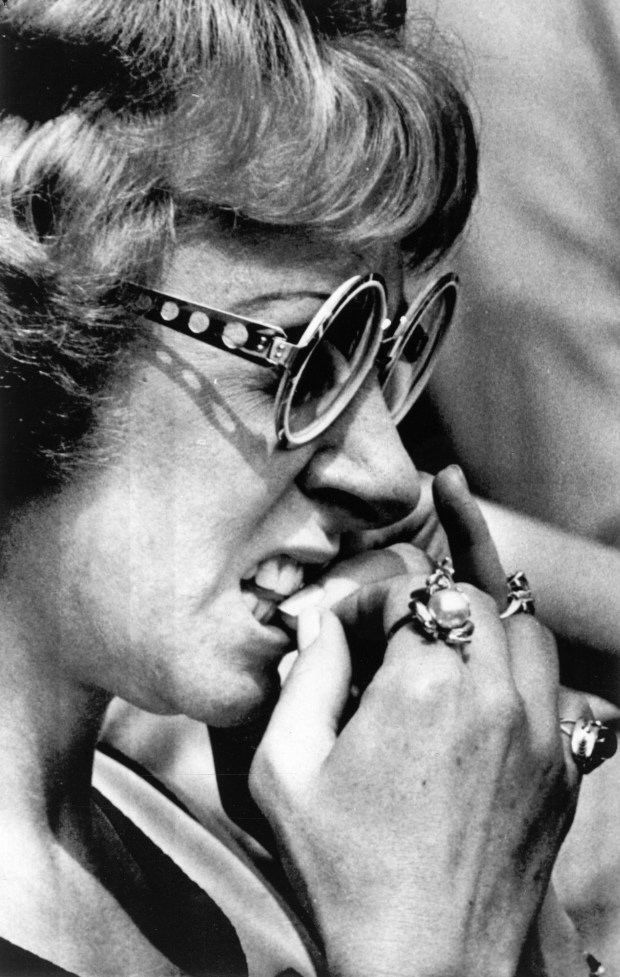 A woman bites her fingernails as she watches the first drawing of the Illinois State Lottery in Springfield on Aug. 8, 1974. (Walter Neal/Chicago Tribune)
A woman bites her fingernails as she watches the first drawing of the Illinois State Lottery in Springfield on Aug. 8, 1974. (Walter Neal/Chicago Tribune)
1974: Almost 7.5 million tickets were sold for the first Illinois State Lottery drawings, which took place starting at 10:30 a.m. on a stage at the edge of the racetrack at the Illinois State Fairgrounds. About 500 people, “sweating under the August sun,” assembled to watch the event. (It was not front page news, however, due to the resignation of President Richard Nixon.)
Vintage Chicago Tribune: Illinois Lottery’s first drawing took place 50 years ago
Lotto’s winning numbers were 15-12-16-18-04. The weekly Bonanza and Millionaire numbers were 697-192-352.
The biggest winner present was a 28-year-old electrician who had just finished wiring the stage. An estimated 35,000 people around the state won prizes of $20, $100 or $5,000.
Laws at the time prevented the lottery’s winning numbers from being broadcast live over radio and television. The Tribune began publishing the results following that first drawing — though no one in the newsroom was allowed to give the numbers over the telephone due to the laws.
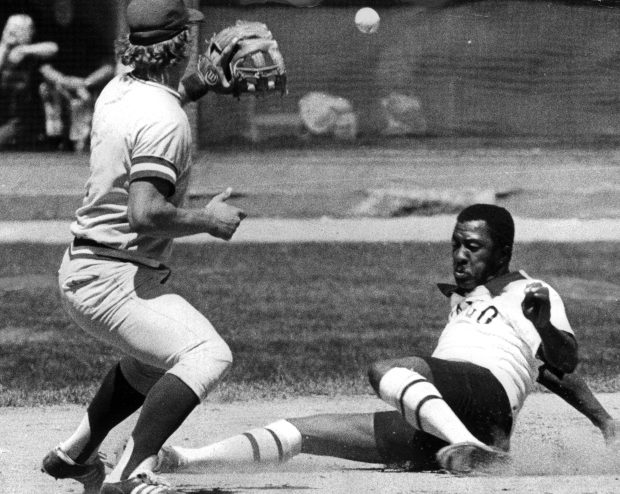 At great risk to his exposed knees, Chicago White Sox outfielder Pat Kelly slides safely into third base on Aug. 8, 1976, after Jim Spencer’s fly ball to left field. When the throw eluded both Kansas City Royals third baseman George Brett and pitcher Marty Pattin, who was backing up the play, Kelly scored the first run of White Sox’s 5-2 opening-game victory over division-leading Royals. (Edward Wagner Jr./Chicago Tribune)
At great risk to his exposed knees, Chicago White Sox outfielder Pat Kelly slides safely into third base on Aug. 8, 1976, after Jim Spencer’s fly ball to left field. When the throw eluded both Kansas City Royals third baseman George Brett and pitcher Marty Pattin, who was backing up the play, Kelly scored the first run of White Sox’s 5-2 opening-game victory over division-leading Royals. (Edward Wagner Jr./Chicago Tribune)
1976: The Chicago White Sox wore shorts in the first game of a doubleheader against the Kansas City Royals, but refused to wear them for the nightcap.
The Sox also donned pajama-style jerseys in 1976, and wore them through 1981. The shorts, however, were short-lived. The players wore them in just three games that season including an Aug. 21-22, 1976, series against the Baltimore Orioles.
Vintage Chicago Tribune: The White Sox’s wild ride into the team’s 125th season
“It’s almost inconceivable that men dressed like little boys could give up 16 hits in six innings, trail the Samson-like Baltimore Orioles by six runs, yet still beat them in 12 innings, 11-10,” former Tribune baseball writer Richard Dozer wrote.
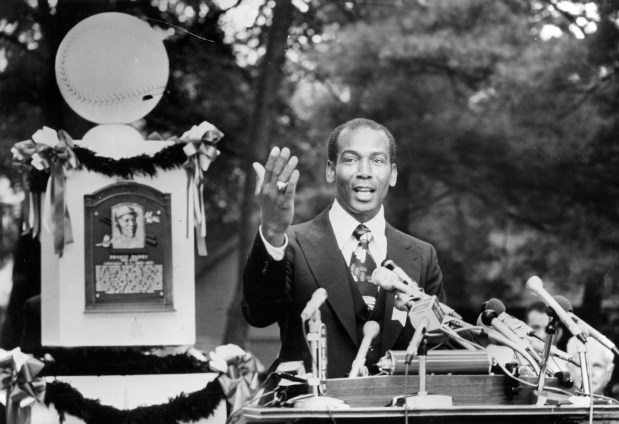 Taking his place alongside other baseball legends, Ernie Banks makes his acceptance speech on Aug. 8, 1977, during his induction into the National Baseball Hall of Fame in Cooperstown, N.Y. “My career and this honor belong to Mr. Philip K. Wrigley,” he said of the Chicago Cubs’ late owner. (Walter Kale/Chicago Tribune)
Taking his place alongside other baseball legends, Ernie Banks makes his acceptance speech on Aug. 8, 1977, during his induction into the National Baseball Hall of Fame in Cooperstown, N.Y. “My career and this honor belong to Mr. Philip K. Wrigley,” he said of the Chicago Cubs’ late owner. (Walter Kale/Chicago Tribune)
1977: “Mr. Cub” Ernie Banks was inducted into the National Baseball Hall of Fame.
1988: The first night game at Wrigley Field was scheduled. Rain, however, ended it after 3½ innings, barring it from being recognized as official.
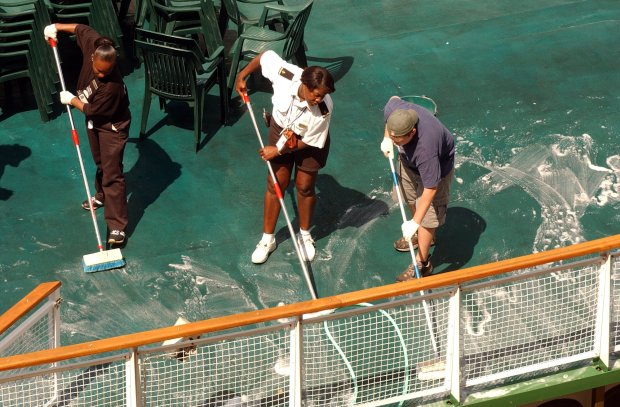 The crew of Chicago’s Little Lady tour boat, Crystal Brown, from left, Audrey Rudd and Brian Burke, clean up the mess that was apparently dumped on them from a passing tour bus lavatory off of the Kinzie Street Bridge on Aug. 8, 2004. The Little Lady was giving an architectural tour along the river at the time of the incident. (Chuck Berman/Chicago Tribune)
The crew of Chicago’s Little Lady tour boat, Crystal Brown, from left, Audrey Rudd and Brian Burke, clean up the mess that was apparently dumped on them from a passing tour bus lavatory off of the Kinzie Street Bridge on Aug. 8, 2004. The Little Lady was giving an architectural tour along the river at the time of the incident. (Chuck Berman/Chicago Tribune)
2004: A tour bus for the Dave Matthews Band passing over the Chicago River unleashed a torrent of foul-smelling waste onto a tour boat below.
Want more vintage Chicago?
Subscribe to the free Vintage Chicago Tribune newsletter, join our Chicagoland history Facebook group, stay current with Today in Chicago History and follow us on Instagram for more from Chicago’s past.
Have an idea for Vintage Chicago Tribune? Share it with Kori Rumore and Marianne Mather at krumore@chicagotribune.com and mmather@chicagotribune.com
